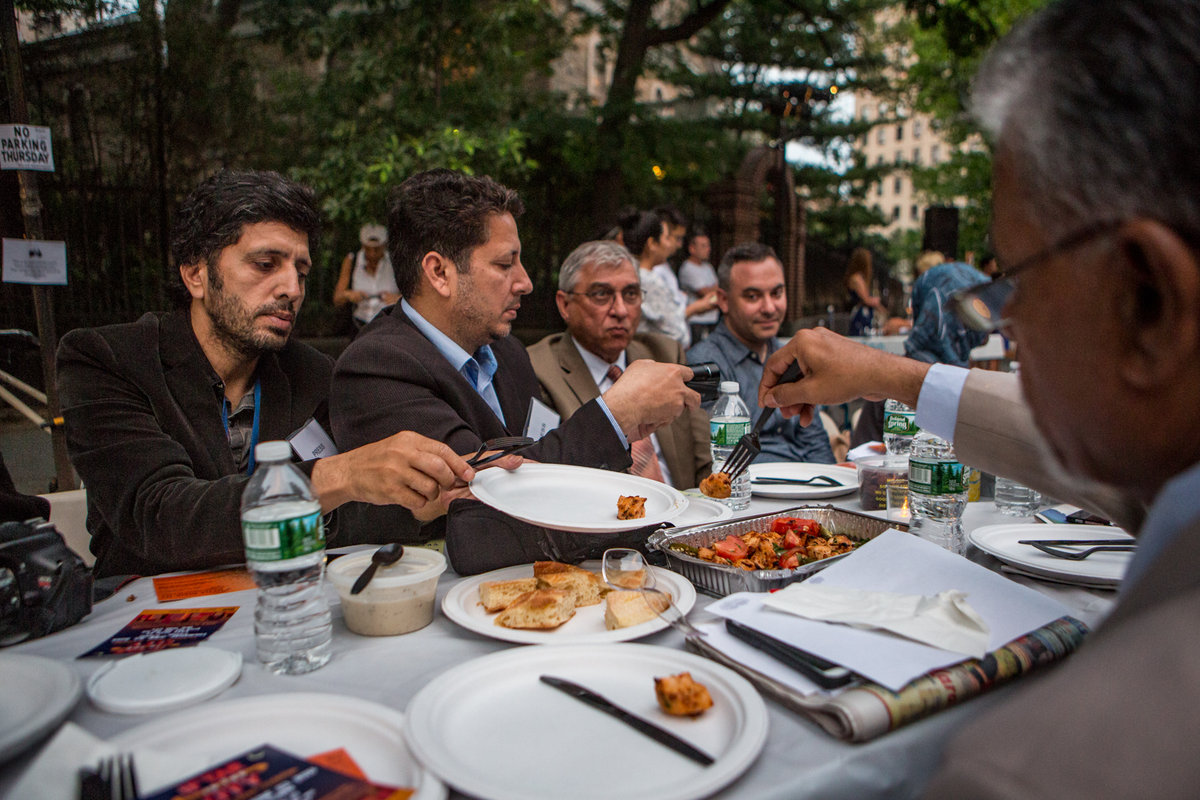The role of women cannot be underestimated in interethnic crisis occurring between Uighurs and Han Chinese in western China. They are protesters, leaders, and they reflect the unique development of Uighur society. And more broadly, these personalities have emerged from social and political marginalization.
The story of women in the recent unrest in northwest China begins with the bigger context in which the conflict arose. Tensions between the Chinese-majority Han and Muslim-minority Uighur in western China have spiraled upwards ever since the 25th of June. In a toy factory in the town of Xuri in eastern Guangdong province, thousands of miles from the current rioting and protesting the current flare-up found its spark.
Uighur workers had been given jobs at the factory to alleviate a labor surplus in their native Xinjiang province in the west. That particular night, a mob of Han workers attacked and killed a pair of Uighur men, who according to some reports were harassing a female worker. The rumor and reality has been hard to sort out, but, through the web in particular, news of the deadly encounter reached the Xinjiang province capital of Urumqi and calls for protests began.
The July 5th protest demanding an investigation into the factory deaths was comprised of around 3,000 Uighur protesters. The demonstration took a violent turn and ended with the death of well over 150 people, Han Chinese making up the majority of the casualties. Hundreds of Uighurs were quickly rounded up as the violence and tensions continues. Through the stories of women involved in one way or another with the crisis, it seems the Uighur response has taken on a decidedly gendered role.
An AP wire points out how women have lead protests partly “because more than 1,400 men in the Muslim Uighur minority have been rounded up by police since ethnic rioting broke out July 5.” The article briefly mentions a woman named Madina Ahtam, a woman who articulated her discontent with the Chinese crackdown.
Ahtam arrived at Urumqi’s White Mosque on Friday, and found the restrooms used to make ablutions before prayer locked. She was vocal in her complaints about Chinese use of fear and intimidation, and attracted a cheering crowd, which then formed a protest behind her. The reporter who observed this seemed to be stuck on wardrobe choice (a sky blue scarf and a leopard print blouse apparently), but more importantly her daring public comments are notable in the face of a visible Chinese military presence.
Tursen Gul, a Uighur woman with similar outrage, had her story picked up by The Times. She is cited repeatedly as “simply wanting her husband back.” At the same time, this personal struggle was described in broader terms: “I told the police that we wanted freedom and a peaceful life.” She spoke directly to the sentiments of many of her fellow Uighurs: “Do we have law in the country? Do you want to give us a peaceful life or not?” Again, the media frame brought up by other media outlets prominently references the “lone protester” during the Tiananmen Square protests. Gul’s attitudes are clearly different; her yearnings were for a peaceful social and political atmosphere, not necessarily for governance reform.
According to recent reports, Han Chinese have led their counter-rioting against the Uighurs by shouting “Down with Rebiya, Long live China!” Rebiya Kadeer is the wealthy and outspoken head of a large exile group, the World Uyghur Congress. The organization’s position is self-determination for Uighurs in Xinjiang province, which they refer to as East Turkestan. China’s official Xinhua news agency quotes a fellow Uighur as calling Kadeer “the ‘scum’ of the Uyghur community.” Furthermore, she was found to have used a misleading photo from an unrelated protest elsewhere in China, which she claimed depicted the police presence in Urumqi. Without a doubt, the nature and strategy of her activism has been in global view for some time now.
In her op-ed for the Wall Street Journal, she spoke in defense of her position and for the Uighurs in Xinjiang: “…the Chinese authorities are conducting a house-to-house search of Uighur homes and are arresting male Uighurs … Uighurs are afraid to walk the streets in the capital of their homeland.” Her piece ended with a pointed condemnation of the spin that the Chinese government had put on recent events, and she remarked that “it is this lack of self-examination that further divides Han Chinese and Uighurs.”
The role of women cannot be underestimated in this interethnic crisis. They are protesters, leaders, and they reflect the unique development of Uighur society. The description of a Uighur woman protester approaching a Chinese armored vehicle during a protest evokes a powerful image; it counters the overused cliché of a weak, pre-modern Muslim woman.
More broadly, these personalities have emerged from social and political marginalization. Through government-sponsored Han migration, the Uighurs have become compelled to assimilate more into Chinese culture, and both their religious and cultural heritage has been sublimated to state culture. The women involved in the conflict along with the men in the Uighur community appear to have used recent events to make a stand for expressing their identities.
The Urumqi Uighurs’ successful carrying out of Friday prayers amidst the turmoil appears to be a line in the sand for their self-expression. Against a visible show of force and attempt to diminish the real points of contention the ethnic Uighurs have with the central government, the men and women of the Uighur community are making their voices heard.
(Photo: David Pham)
Abbas Jaffer is Associate Editor of Altmuslimah




